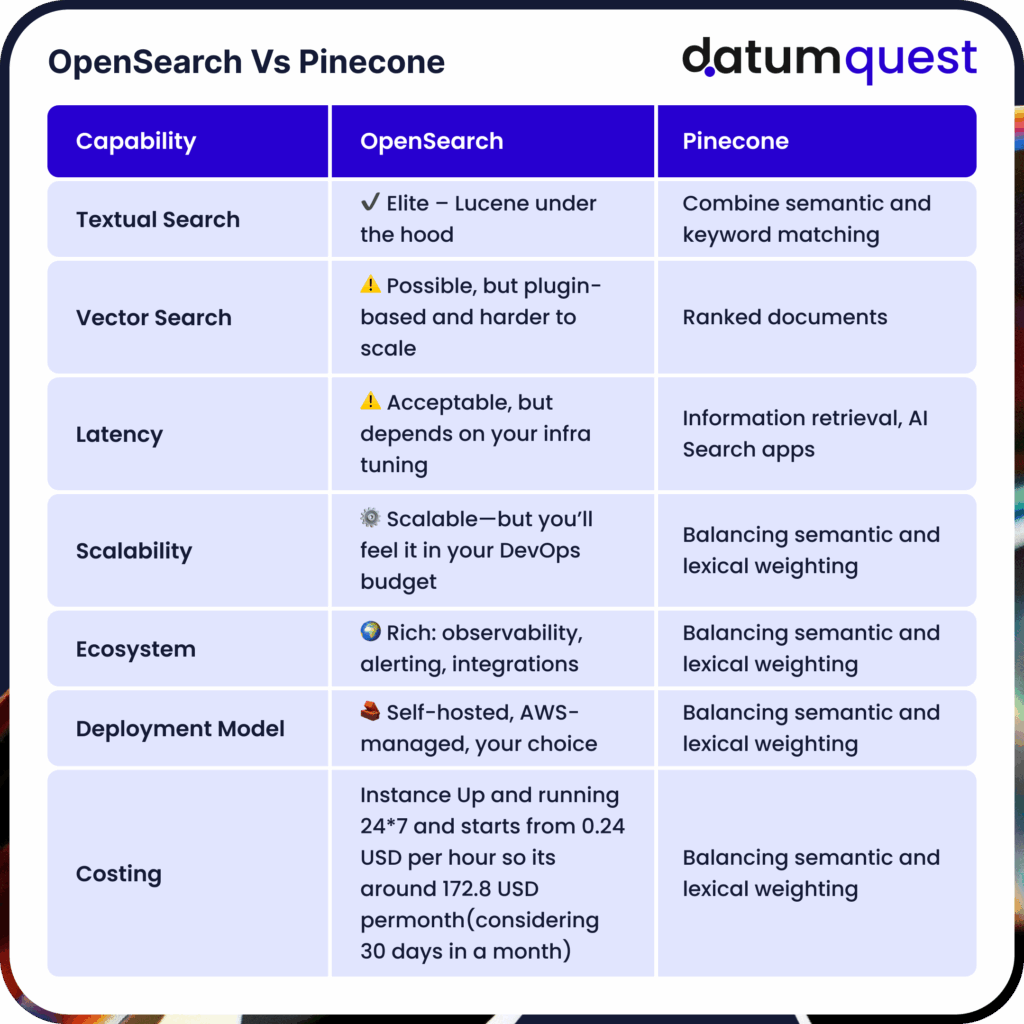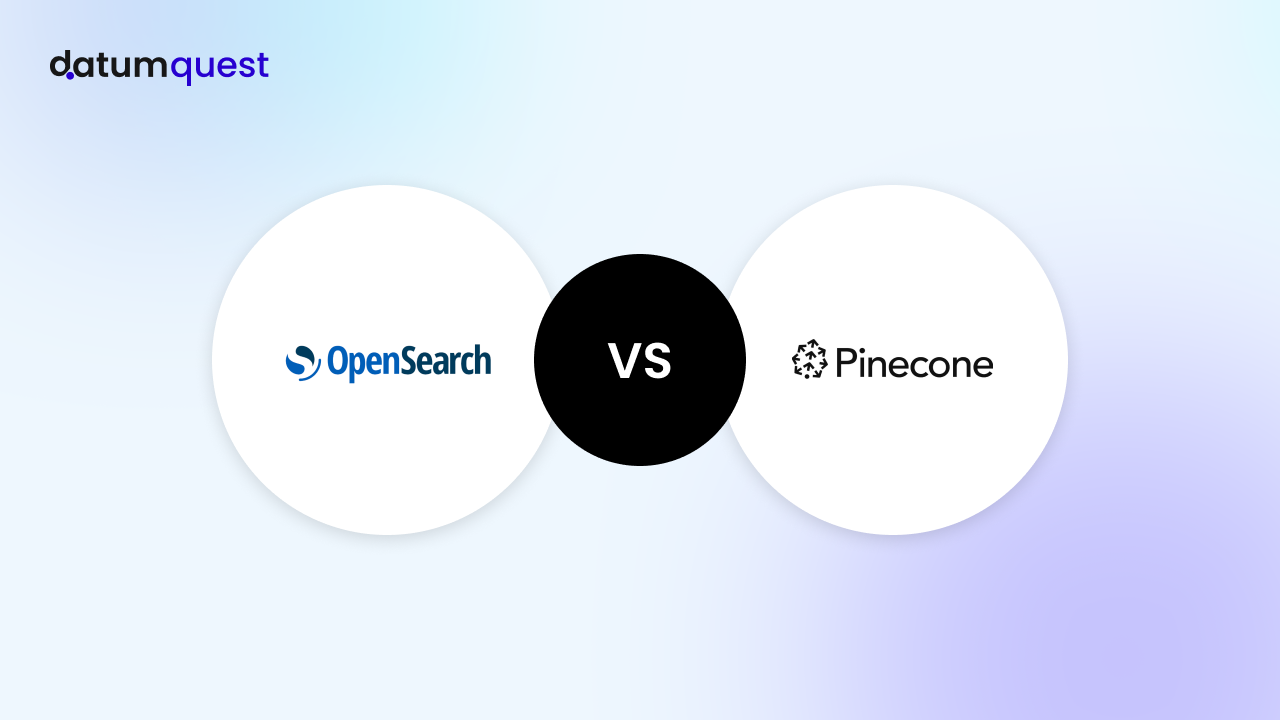Introduction
Search Used to be Simple,
Too Simple
Today, simplicity just means “not ready”.
We’re not living in the keyword era anymore. Your users don’t care about exact matches, they care about meaning, Intent, and Relevance. When someone types “cozy reading chair,” they’re not looking for a chair with the word “reading” in the name, they’re after a vibe. And if your search engine doesn’t get that?
“You lose users”
OpenSearch is the old soul of search engines. Born from Elasticsearch, it’s like that engineer who’s been around the block and can debug in Vim at 3AM with a cup of cold black coffee.
It’s great at:
Traditional keyword search
Log aggregation
Real-time dashboards (Kibana)
Being deployed absolutely anywhere—on-prem, cloud, hybrid, you name it,
But what if you’re not looking for keywords? What if you want to search meaning?
That’s where Pinecone enters—no war stories, no legacy baggage. Just clean, purpose-built vector search that’s embarrassingly fast and frighteningly scalable.
Think OpenSearch is a well-stocked toolkit. Pinecone is the precision-engineered laser cutter.
What Happens When You Actually Build With Them ?

OpenSearch: Whether you’re using it or not, the meter’s running. That EC2 instance? That EBS volume? Still billing you. It’s like keeping a car engine running all night “just in case.”
Pinecone: Usage-based. No traffic? No unnecessary cost. You’re not paying to keep the lights on 24/7, you’re paying for what actually runs. Clean, predictable, and built for scale without surprise infra bills.
Who Belongs Where?
An e-commerce platform where users want to search “something like this” with a photo or vague description?
→ Pinecone eats this for breakfast.
An observability dashboard for your dev teams, where you want to search logs, generate alerts, and visualize metrics in real-time?
→ OpenSearch. Without question.
A hybrid search engine that mixes product tags, text, and image embeddings?
→ Use both. Index product metadata and tags in OpenSearch. Store embeddings in Pinecone. Build a fusion engine. You win.
The real strategy? Know your use case. Then stack your tools accordingly.
Sometimes that means choosing. Other times—it means combining.
Let OpenSearch handle your structured and keyword data. Let Pinecone handle the semantic, unstructured, embedding-powered lookups. Suddenly you’ve got the best of both worlds. A search engine that’s as nuanced as your users.
🚀 Parting Thought
Search isn’t just a backend feature anymore. It’s user experience. It’s a product.
If it’s slow, dumb, or inaccurate you’re not just losing conversions. You’re losing trust. So whether you build with Pinecone, OpenSearch, or both.
Make it fast. Make it meaningful. Make it invisible.
